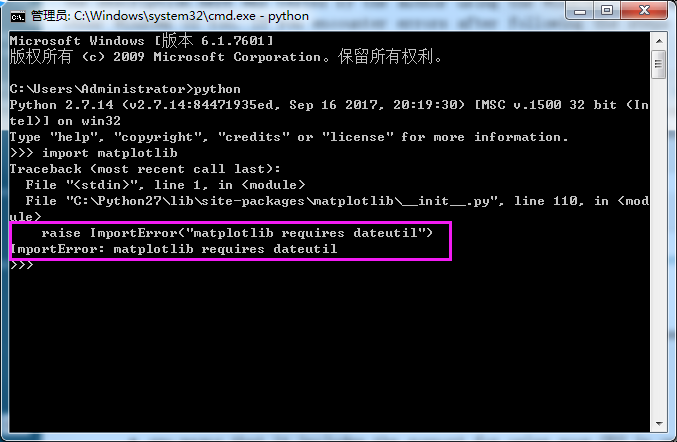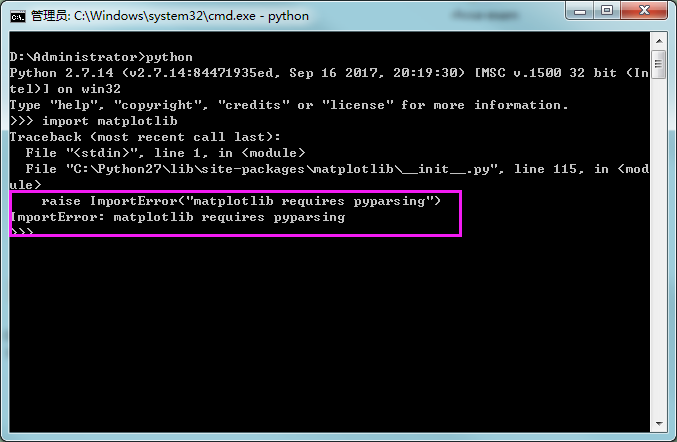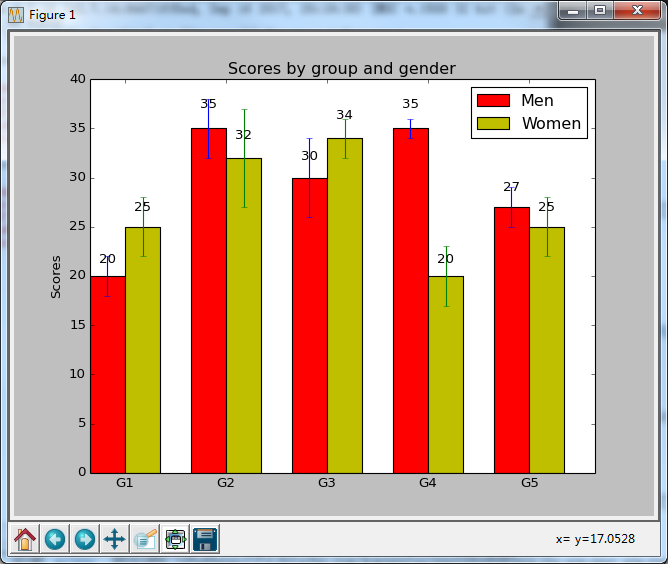day1 Opencv安装 python 2.7 (32位)
【参考安装步骤】 http://opencv-python-tutroals.readthedocs.io/en/latest/index.html
http://blog.csdn.net/huruzun/article/details/39395343
1.环境
win7 64
python2.7 32位 https://www.python.org/downloads/
切记:安装过程中,添加到环境变量PATH中

查看python是32位还是64位?

2.openCV安装
2.1 安装 numpy
下载地址:https://sourceforge.net/projects/numpy/files/NumPy/1.7.1/numpy-1.7.1-win32-superpack-python2.7.exe/download

打开cmd到存放文件的当前目录,(我的就在桌面放的) 执行 pip2 install numpy-1.13.1+mkl-cp27-cp27m-win32

2)安装VC
error错误:缺少 Visual C++ 9.0
error: Microsoft Visual C++ 9.0 is required. Get it from http://aka.ms/vcpython27
下载地址:https://www.microsoft.com/en-us/download/details.aspx?id=44266
安装vc成功后,cmd执行命令 pip2 install numpy-1.13.1+mkl-cp27-cp27m-win32


3) 安装成功
python环境下: import numpy

2.2 安装matplotlib
下载地址:https://downloads.sourceforge.net/project/matplotlib/matplotlib/matplotlib-1.3.0/matplotlib-1.3.0.win32-py2.7.exe

1). error报错:缺少dateutil模块
raise ImportError("matplotlib requires dateutil")
ImportError: matplotlib requires dateutil

dateutil模块 下载地址:http://www.lfd.uci.edu/~gohlke/pythonlibs/#python-dateutil


2)报错: 缺少pyparsing模块
raise ImportError("matplotlib requires pyparsing")
ImportError: matplotlib requires pyparsing

pyparsing模块,下载地址:http://www.lfd.uci.edu/~gohlke/pythonlibs/#pyparsing


3)安装成功

2.3 安装opencv
1)下载
地址 https://sourceforge.net/projects/opencvlibrary/files/latest/download?source=files
双击安装

2)复制配置文件
到 安装目录下的 C:\opencv\build\python\2.7\x86 将cv2.pyd复制到C:\Python27\Lib\site-packages

3)安装成功:

4)查看opencv版本
在命令行输入以下代码:
python
import cv2
cv2.__version__
3. 测试程序
import numpy as np
import matplotlib.pyplot as plt
N = 5
menMeans = (20, 35, 30, 35, 27)
menStd = (2, 3, 4, 1, 2)
ind = np.arange(N) # the x locations for the groups
width = 0.35 # the width of the bars
fig, ax = plt.subplots()
rects1 = ax.bar(ind, menMeans, width, color='r', yerr=menStd)
womenMeans = (25, 32, 34, 20, 25)
womenStd = (3, 5, 2, 3, 3)
rects2 = ax.bar(ind+width, womenMeans, width, color='y', yerr=womenStd)
# add some
ax.set_ylabel('Scores')
ax.set_title('Scores by group and gender')
ax.set_xticks(ind+width)
ax.set_xticklabels( ('G1', 'G2', 'G3', 'G4', 'G5') )
ax.legend( (rects1[0], rects2[0]), ('Men', 'Women') )
def autolabel(rects):
# attach some text labels
for rect in rects:
height = rect.get_height()
ax.text(rect.get_x()+rect.get_width()/2., 1.05*height, '%d'%int(height),
ha='center', va='bottom')
autolabel(rects1)
autolabel(rects2)
plt.show()

import cv2
import numpy as np
img = cv2.imread("22.png")
emptyImage = np.zeros(img.shape, np.uint8)
emptyImage2 = img.copy()
emptyImage3=cv2.cvtColor(img,cv2.COLOR_BGR2GRAY)
cv2.imshow("EmptyImage3", emptyImage3)
cv2.waitKey (0)
cv2.destroyAllWindows()


